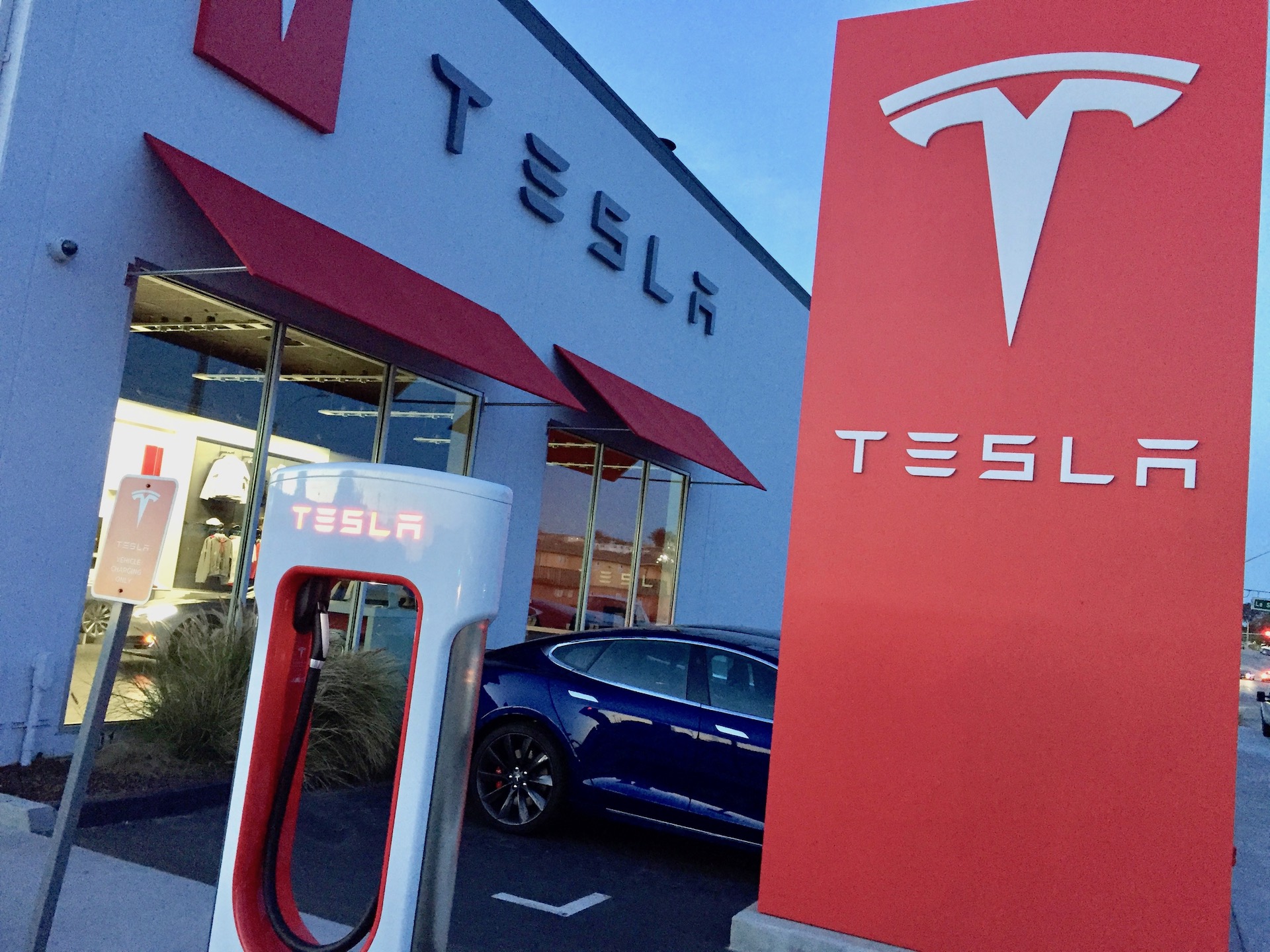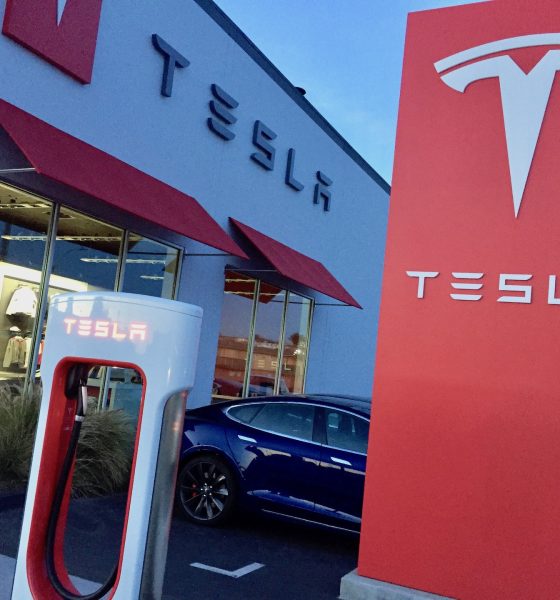

News
Three reasons Tesla will continue to go higher in ’22, according to one of its biggest bulls
Tesla will close out 2021 with record figures for its production and deliveries, continuing a streak that has dated back to 2012. However, 2021 is likely to be eclipsed by 2022, according to Wedbush analyst Dan Ives, who gave three reasons why Tesla (NASDAQ: TSLA) will continue to move upward, making the new year its biggest to date.
Ives, who has been one of Tesla’s most notable bulls on the Street throughout the past couple of years, believes Tesla’s performance in 2021 showed a robust determination to navigate parts and chip shortages, vowing not to let the bottlenecks, which may cause some large automakers to report negative figures compared to last year, affect its production figures in the same fashion. Tesla routinely updated investors and enthusiasts on its ability to deter itself from chip shortages regularly, including a groundbreaking announcement during the Q2 2021 Earnings Call, where the automaker had designed, developed, and validated a series of 19 variants of controllers. This effort from Tesla engineers helped the automaker avoid and mitigate large-scale disruptions in its production and delivery process.
Tesla did this better than any other automaker, Ives said in a Tweet from Monday. The story of 2021 was likely based on this effort alone, which was monumental and could have caused serious problems for some companies, especially those without substantial cash on hand.
Looking forward to 2022, Ives sees Tesla’s impressive performance continuing, listing three main factors in the automaker’s quest to continue its meteoric rise up the ranks of global automotive companies. While Tesla leads every car company on Earth in valuation, the next goal in the company’s sights must be to increase its production and delivery numbers on an annual basis, inching closer to the one million vehicle annual run rate.
Giga Berlin and Giga Texas
Ives lists Tesla’s two new manufacturing facilities as the first point in the company’s quest for a monumental 2022. Gigafactory Berlin and Gigafactory Texas were set to open in 2021. However, delays due to the pandemic and other political issues in Germany have derailed the start of either of these facilities during this year, which is not necessarily a bad thing. Tesla will come out in 2022, firing on all cylinders. Two new production facilities will launch with massive implications for the company’s growth forecast, as they will both contribute to Tesla’s consistently growing run rate. With these two factories sufficiently ramped in 2022 by Q2 or Q3, if all goes according to plan, Tesla could come close to doubling its current output in 2021 for 2022.
China “Mega-Growth”
China has proven to be one of Tesla’s most successful markets, and Ives believes the increasing run rates out of Gigafactory Shanghai will continue to surge more growth into the company. There is no doubt that Tesla has continued to be a substantial force in China, despite robust competition and a somewhat coordinated media attack on the company’s products. However, it has not stopped Tesla from performing exceptionally well in the sector. Tesla has delivered over 50,000 vehicles per month in China for the past two months. Some monthly figures, which are confirmed by the Chinese Passenger Car Association, are lower than others due to Tesla’s strategy to export vehicles from China to Europe, where Giga Berlin is waiting for approval to begin operation.
Tesla Giga Shanghai shows off its Model 3 production efficiency in recent video
Unit growth fueled by new facilities and increased demand
Ives is forecasting a unit growth of 55 or 60 percent for Tesla in 2022, which can mostly be attributed to the new factories in Texas and Berlin. This could perhaps be Tesla’s key, along with more efficient battery cells, to an even higher stock price and valuation. However, even more, Tesla’s increased production rates could put the company on par with some of the more large-scale car companies, especially if it can cross the one million vehicle production rate annually, which should be easy considering the projected output after ramping production lines at Berlin and Texas.
Ives reiterated his $1,400 price target and the “Outperform” rating he held on Tesla stock. Ives is ranked 22nd out of 7,756 analysts on TipRanks. He also holds a 76% success rate and an average return of 36.4%.
Disclosure: Joey Klender is a TSLA Shareholder.
I’d love to hear from you! If you have any comments, concerns, or questions, please email me at joey@teslarati.com. You can also reach me on Twitter @KlenderJoey, or if you have news tips, you can email us at tips@teslarati.com.

News
Tesla FSD fleet is nearing 7 billion total miles, including 2.5 billion city miles
As can be seen on Tesla’s official FSD webpage, vehicles equipped with the system have now navigated over 6.99 billion miles.

Tesla’s Full Self-Driving (Supervised) fleet is closing in on almost 7 billion total miles driven, as per data posted by the company on its official FSD webpage.
These figures hint at the massive scale of data fueling Tesla’s rapid FSD improvements, which have been quite notable as of late.
FSD mileage milestones
As can be seen on Tesla’s official FSD webpage, vehicles equipped with the system have now navigated over 6.99 billion miles. Tesla owner and avid FSD tester Whole Mars Catalog also shared a screenshot indicating that from the nearly 7 billion miles traveled by the FSD fleet, more than 2.5 billion miles were driven inside cities.
City miles are particularly valuable for complex urban scenarios like unprotected turns, pedestrian interactions, and traffic lights. This is also the difference-maker for FSD, as only complex solutions, such as Waymo’s self-driving taxis, operate similarly on inner-city streets. And even then, incidents such as the San Francisco blackouts have proven challenging for sensor-rich vehicles like Waymos.
Tesla’s data edge
Tesla has a number of advantages in the autonomous vehicle sector, one of which is the size of its fleet and the number of vehicles training FSD on real-world roads. Tesla’s nearly 7 billion FSD miles then allow the company to roll out updates that make its vehicles behave like they are being driven by experienced drivers, even if they are operating on their own.
So notable are Tesla’s improvements to FSD that NVIDIA Director of Robotics Jim Fan, after experiencing FSD v14, noted that the system is the first AI that passes what he described as a “Physical Turing Test.”
“Despite knowing exactly how robot learning works, I still find it magical watching the steering wheel turn by itself. First it feels surreal, next it becomes routine. Then, like the smartphone, taking it away actively hurts. This is how humanity gets rewired and glued to god-like technologies,” Fan wrote in a post on X.
News
Tesla starts showing how FSD will change lives in Europe
Local officials tested the system on narrow country roads and were impressed by FSD’s smooth, human-like driving, with some calling the service a game-changer for everyday life in areas that are far from urban centers.

Tesla has launched Europe’s first public shuttle service using Full Self-Driving (Supervised) in the rural Eifelkreis Bitburg-Prüm region of Germany, demonstrating how the technology can restore independence and mobility for people who struggle with limited transport options.
Local officials tested the system on narrow country roads and were impressed by FSD’s smooth, human-like driving, with some calling the service a game-changer for everyday life in areas that are far from urban centers.
Officials see real impact on rural residents
Arzfeld Mayor Johannes Kuhl and District Administrator Andreas Kruppert personally tested the Tesla shuttle service. This allowed them to see just how well FSD navigated winding lanes and rural roads confidently. Kruppert said, “Autonomous driving sounds like science fiction to many, but we simply see here that it works totally well in rural regions too.” Kuhl, for his part, also noted that FSD “feels like a very experienced driver.”
The pilot complements the area’s “Citizen Bus” program, which provides on-demand rides for elderly residents who can no longer drive themselves. Tesla Europe shared a video of a demonstration of the service, highlighting how FSD gives people their freedom back, even in places where public transport is not as prevalent.
What the Ministry for Economic Affairs and Transport says
Rhineland-Palatinate’s Minister Daniela Schmitt supported the project, praising the collaboration that made this “first of its kind in Europe” possible. As per the ministry, the rural rollout for the service shows FSD’s potential beyond major cities, and it delivers tangible benefits like grocery runs, doctor visits, and social connections for isolated residents.
“Reliable and flexible mobility is especially vital in rural areas. With the launch of a shuttle service using self-driving vehicles (FSD supervised) by Tesla in the Eifelkreis Bitburg-Prüm, an innovative pilot project is now getting underway that complements local community bus services. It is the first project of its kind in Europe.
“The result is a real gain for rural mobility: greater accessibility, more flexibility and tangible benefits for everyday life. A strong signal for innovation, cooperation and future-oriented mobility beyond urban centers,” the ministry wrote in a LinkedIn post.
News
Tesla China quietly posts Robotaxi-related job listing
Tesla China is currently seeking a Low Voltage Electrical Engineer to work on circuit board design for the company’s autonomous vehicles.

Tesla has posted a new job listing in Shanghai explicitly tied to its Robotaxi program, fueling speculation that the company is preparing to launch its dedicated autonomous ride-hailing service in China.
As noted in the listing, Tesla China is currently seeking a Low Voltage Electrical Engineer to work on circuit board design for the company’s autonomous vehicles.
Robotaxi-specific role
The listing, which was shared on social media platform X by industry watcher @tslaming, suggested that Tesla China is looking to fill the role urgently. The job listing itself specifically mentions that the person hired for the role will be working on the Low Voltage Hardware team, which would design the circuit boards that would serve as the nervous system of the Robotaxi.
Key tasks for the role, as indicated in the job listing, include collaboration with PCB layout, firmware, mechanical, program management, and validation teams, among other responsibilities. The role is based in Shanghai.
China Robotaxi launch
China represents a massive potential market for robotaxis, with its dense urban centers and supportive policies in select cities. Tesla has limited permission to roll out FSD in the country, though despite this, its vehicles have been hailed as among the best in the market when it comes to autonomous features. So far, at least, it appears that China supports Tesla’s FSD and Robotaxi rollout.
This was hinted at in November, when Tesla brought the Cybercab to the 8th China International Import Expo (CIIE) in Shanghai, marking the first time that the autonomous two-seater was brought to the Asia-Pacific region. The vehicle, despite not having a release date in China, received a significant amount of interest among the event’s attendees.










